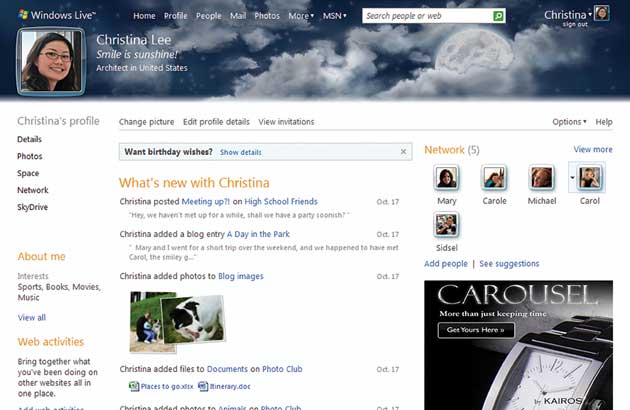CEOs take on Social Media
Posted by: Nanette Byrnes on November 14
Many CEOs use social media sites like Facebook, MySpace, YouTube and Twitter personally, but few use them to communicate with stakeholders. And while 29% say social media can be a very or extremely effective way for companies to communicate, just as many find it ineffective. These are some of the findings of a September survey of 200 chief executives by public relations firm Burson-Marsteller and PRWeek.
So while CEOs are on these sites a lot (43% of the CEOs said they are on them often, including 19% who visit daily) it’s not for business. Only 18% say they use them to communicate with customers and other stakeholders.
Why not? 48% say they lack relevance to the target stakeholder groups 37% voice concern about loosing control of their message 28% worry about return on the investment and 23% blame a lack of knowledge and capability within the company
Another reason may be that they’re not convinced of the payoff. While 62% see social media as having an impact on a company’s reputation, only 48% say it can change sales.
They seem much more convinced of the power of Word of Mouth and viral campaigns. 60% say those have more influence today than they did three years ago. Also rising in influence: trade media, blogs covering their industry, and traditional media including the Wall Street Journal (44% say its sway has grown) and BusinessWeek (24%). 67% of those surveyed will increase their spending on digital marketing in 2009.
Facebook’s the site most often used for public relations, but 71% of CEOs said their company web site is the best way to communicate with consumers during a crisis.
Burson-Marsteller thinks CEOs should be more social. In the press release on the findings, Mark J. Penn President & CEO says “CEOs should understand that many of their stakeholders are active users of social media and that it can be an extremely effective means for communicating a message. I would argue that companies that are not engaging in social media are taking a bigger risk than the companies that are.”
He’s on Facebook.
Gannett Buys Social Media Firm
Nov 14, 2008
NEW YORK Expanding its digital business, Gannett has acquired Ripple6, a provider of social media services. Ripple6 will become a wholly owned subsidiary, providing its social media technology and analytics to Gannett as well as to marketers and Web publishers. As part of the transaction, the 10 percent stake of Ripple6 owned by Chris Saridakis, svp and chief digital officer of Gannett, was bought out by Gannett. Financial terms of the deal were not disclosed. Ripple6 powers a number of...More


 Microsoft just
Microsoft just  Windows Live Photos: This is one of the most interesting new applications, and we will publish a more in-depth review of it a little bit later tonight. Basically, this is Microsoft's answer to Yahoo's
Windows Live Photos: This is one of the most interesting new applications, and we will publish a more in-depth review of it a little bit later tonight. Basically, this is Microsoft's answer to Yahoo's 


 November 21 is the day the 2.2 software update for the iPhone (and iPod touch) is expected to be released,
November 21 is the day the 2.2 software update for the iPhone (and iPod touch) is expected to be released,  Facebook
Facebook 
